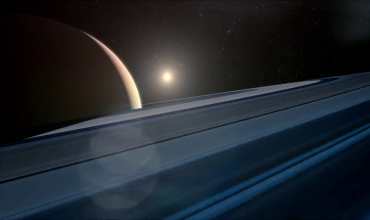-
or
Предыдущая строка субтитров
-
or
Следующая строка субтитров
-
or
Увеличить размер субтитров
-
or
Уменьшить размер субтитров
-
or
Перевести выделенный текст в субтитрах
Краткое содержание
This episode looks to the nature of the cosmos on the micro and atomic scales, using the Ship of the Imagination to explore these realms. Tyson describes some of the micro-organisms that live within a dew drop, demonstrating parameciums and tardigrades. He proceeds to discuss how plants use photosynthesis via their chloroplasts to convert sunlight into chemical reactions that convert carbon dioxide and water into oxygen and energy-rich sugars. Tyson then discusses the nature of molecules and atoms and how they relate to the evolution of species. He uses the example set forth by Charles Darwin postulating the existence of the long-tongued Morgan's sphinx moth based on the nature of the comet orchid with pollen far within the flower. He further demonstrates that scents from flowers are used to trigger olfactory centers in the brain, stimulating the mind to threats as to aid in the survival of the species.
Tyson narrates how two Greek philosophers contributed to our understanding of science. Thales was among the first thinkers to examine a "universe governed by the order of natural laws that we could actually figure out," and Democritus postulated that all matter was made up of combinations of atoms in a large number of configurations. He then describes how carbon forms the basic building block for life on Earth due to its unique chemical nature. Tyson explains the basic atomic structure of protons, neutrons, and electrons, and the process of nuclear fusion that occurs in most stars that can overcome the electrostatic forces that normally keeps atoms from touching each other. He then discusses the existence of neutrinos that are created by these nuclear processes, and that typically pass through all matter, making them virtually undetectable. He explains how subterranean water pool facilities lined with special detectors like the Super-Kamiokande are used to detect neutrinos when they collide with water molecules, and how neutrinos from supernova SN 1987A in the Large Magellanic Cloud were detected three hours before the photons of light from the explosion were observed due to the neutrinos' ability to pass through matter of the dying sun. Tyson concludes by noting that there are neutrinos from the Big Bang still existing in the universe but due to the nature of light, there is a "wall of infinity" that cannot be observed beyond.

